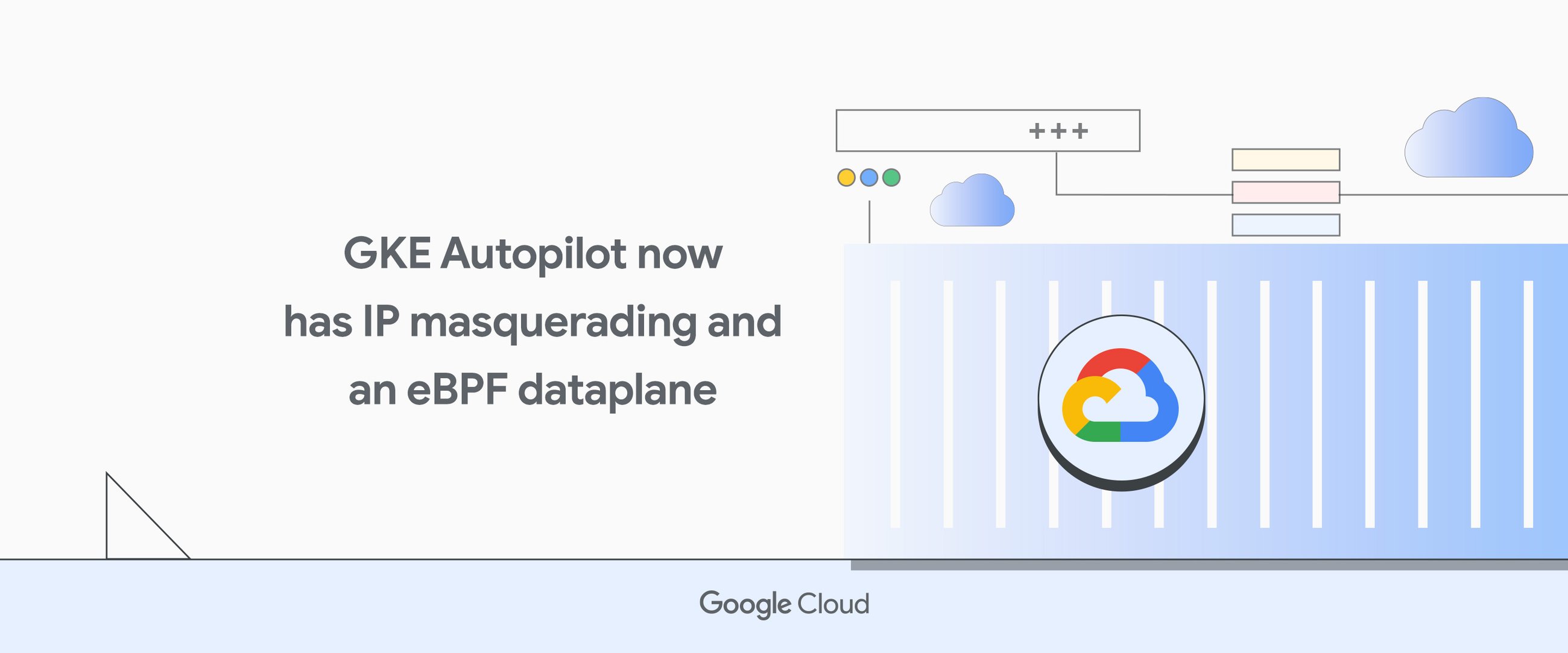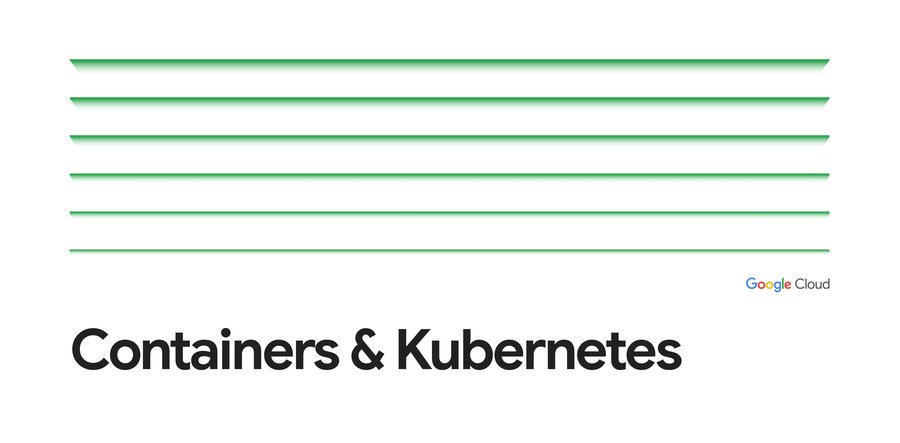IP Masquerading and eBPF are now in GKE Autopilot

Cynthia Thomas
Product Manager
So you’re deploying Kubernetes and you’ve been ready-to-go with your containerized applications. But one problem you’ve faced is IP exhaustion across your diverse environments and your clusters need to talk to your on-prem clusters or hosts. Or maybe your workloads talk to a service that expects only RFC 1918 addresses for regulatory or compliance reasons.
You can now translate your pod IPs to your node IPs on GKE Autopilot clusters with the latest networking features that are generally available:
- Our Egress NAT policy with IP masquerading for pod to node IP translation is now GA for GKE Autopilot, and
- Our advanced programmable datapath based on eBPF, Dataplane V2 (DPv2), with support for Network Policy & Logging is also now GA for GKE Autopilot.
Egress NAT Policy for GKE Autopilot
Egress NAT policy allows you to masquerade your pod IPs to the node IP addresses, enabling pods (typically in a separate network island) to communicate outside the cluster using the IP address of a node as the source IP. Some of our users have used special IPs (non-RFC 1918 addresses) for their pod ranges to expand their IP usage by leveraging Reserved or Class E IP space. A few use cases for wanting to masquerade the pod IPs to those of the nodes is for communication back to on-premise workloads for security or compliance reasons, or just for compatibility reasons. Previously, users were not able to configure IP masquerading due to managed namespace restrictions in GKE Autopilot. With the Egress NAT policy custom resource definition (CRD), we’ve enabled a user-facing API to allow you to configure IP masquerading on GKE Autopilot clusters.
"We use GKE Autopilot because of its reduced operational overhead and potential cost reductions. The addition of IP masquerading via Egress NAT policy expands our use of Autopilot to include accessing on-premises data and systems." —Joey Brown, Engineering Manager at American Family Insurance.
Our long-term goal is to have the same API and feature set across GKE and Anthos platforms. We have extended Egress NAT policy in Anthos to provide NAT functionality based on K8s resources like namespaces and/or labels. This new Egress NAT policy on GKE Autopilot clusters provides source NAT controls to start. With this launch, we’re taking the initial step in achieving the first milestone on our roadmap.
Cloud Composer 2, a Google managed workflow orchestration service built on Apache Airflow, uses GKE Autopilot under the hood. Cloud Composer 2 users also benefit from the introduction of Egress NAT policies to enable communication to various environments.
"We are a big Cloud Composer user as part of our GCP journey. We have dealt with IP shortages by using non-RFC 1918 address space for our GKE clusters. With Egress NAT policy, we can now use IP masquerading with Cloud Composer 2. Workloads using non-RFC 1918 addressing with Cloud Composer 2 are now able to make API calls to our wider Equifax applications. We are excited about using Egress NAT policies with Cloud Composer 2 to enable more of our applications on GCP."– Siddharth Shekhar, Site Reliability Engineer - Specialist at Equifax.
Egress NAT policy is now generally available on GKE Autopilot clusters with DPv2 in versions 1.22.7-gke.1500+ or 1.23.4-gke.1600+. For configuration examples of Egress NAT policy, please refer to our how-to guide in the GKE documentation.
GKE Autopilot with Dataplane V2 (DPv2)
Have you been wanting to segregate your cluster workloads and understand when your Network Policies are enforced? GKE Autopilot now uses Dataplane V2 (DPv2) for container networking, a datapath integrated into Google infrastructure based on eBPF. With this advanced dataplane, you, as a GKE Autopilot user, can now take advantage of features like Network Policy and Network Policy Logging.
With DPv2 support, GKE Autopilot clusters can now benefit from the advantages that GKE standard clusters currently have with DPv2:
- Security via Kubernetes Network Policy
- Scalability by removing iptables and kube-proxy implementations
- Operational benefits with Network Policy Logging
- Consistency with Anthos and GKE environments.
Network Policy Logging enables security teams to audit logs and understand allowed or denied traffic flows based on existing Network Policies. It can be configured as an object on your GKE cluster and filtered per various parameters. The following is an example of a logged entry retrieved after an attempted access that was denied.
Network Policy Logs are automatically uploaded to Cloud Logging and can also be retrieved via the Cloud Console Log Explorer. Network Policy metrics are also enabled with Dataplane v2 such that policy event metrics can be monitored even when Network Policy Logging is not enabled.
GKE Autopilot uses DPv2 for all newly created clusters starting in GKE versions 1.22.7-gke.1500+ or 1.23.4-gke.1600+. For more information about Dataplane V2, check out our GKE Dataplane V2 docs.
Getting started with GKE Autopilot with DPv2 is as easy as entering the following gcloud command:
To learn more about GKE Autopilot, check out our Overview page.

